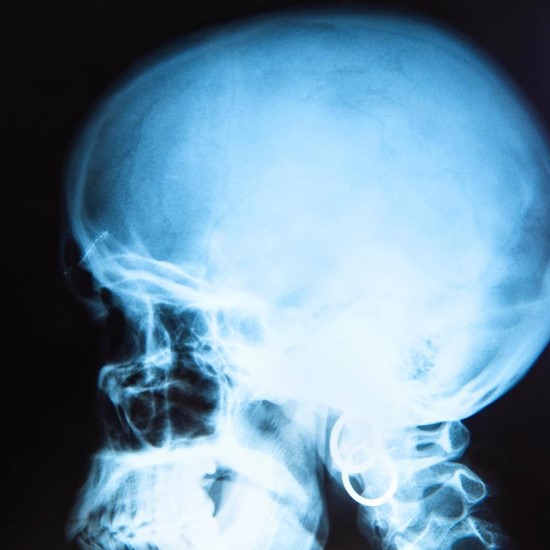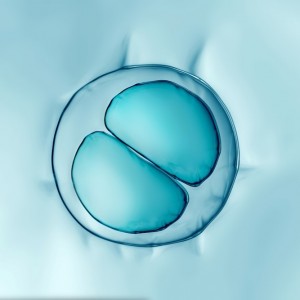
New study identifies how stem cells mobilize to mend a fracture
When a head injury results in a skull fracture, stem cells—the cells reserved to replace dead cells or repair damaged cells—rush to the site of the injury and start multiplying within 24 to 48 hours after the injury occurs. What hasn’t been fully known until now is how the cells know where and when to move, to multiply, and to make up for the lost cells. That is the subject of a new finding recently published in Science Signaling by Dr. Yingzi Yang, professor of Developmental Biology at Harvard School of Dental Medicine (HSDM).
Yang and her team of researchers specifically studied craniofacial bones to better understand stem cell activation, particularly stem cell migration and expansion, during tissue repair to identify signaling molecules that tell the stem cells where to go and how to expand.
“We looked at how these stem cells respond to injury, expand in number, migrate to the injury site, and differentiate into cells to regenerate lost tissue. Suture stem cells (SuSCs) are important for homeostasis and regeneration of cranial bone and can be used as a model to understand stem cell regulation for tissue regeneration at a distance,” said Yang.
The researchers found that after injury, the signaling molecules Cxcl12, Shh, and Ihh work together to help Gli1+ stem cells multiply in number. They also guide the stem cells and their descendants to migrate specifically to the damaged area and develop into bone-forming cells.
“Our findings represent a major step forward to allow us not only to harness the capacity of the SuSCs for cranial bone regeneration, but also to pinpoint the cell of origin that causes craniofacial defects such as craniosynostosis, a disorder resulting from premature suture closure, in genetic diseases and other conditions,” said Yang.
The finding highlights the vital role of suture stem cells, shedding light on genetic disorders that affect skull formation and conditions such as progressive osseous heteroplasia and fibrous dysplasia. By understanding the underlying mechanisms, better treatments could be found for these debilitating conditions.
“Currently, surgery is quite often the only option for treating these conditions. However, now that we know how natural healing is controlled, our hope is that it could open the door to non-surgical approaches,” said Yang.
This work was supported by National Institutes of Health grants R01DE025866.
Source: https://www.hsdm.harvard.edu/
 Related articles
Related articles
Editorials 11 February 2025
University of Michigan School of Dentistry faculty and patients participated in a new study that supports changes in how dentists and oral surgeons treat post-surgical pain.
Pediatric dentistry 29 March 2024
A major clinical trial led by a University of Michigan School of Dentistry professor has shown that silver diamine fluoride (SDF) is effective in stopping tooth decay when applied to the teeth of...
Editorials 26 February 2025
New research identifies a gene that could help fight head and neck cancers with immunotherapy
For people with head and neck cancers, the treatment can sometimes be as challenging as the disease.
Oral pathology 24 October 2025
Isolation and characterization of dental pulp stem cells from a supernumerary tooth
Dental pulp stem cells (DPSCs) were primarily derived from the pulp tissues of primary incisors and permanent third molar teeth, whereas no report to our knowledge has yet been documented on deriving...
Oral pathology 07 February 2024
The characteristics of a stem cell are the potential for multidifferentiation (ability to differentiate into different cell types) and the capacity for self-renewal (ability to generate daughter stem...
 Read more
Read more
Products 05 November 2025
SimplyTest has launched a groundbreaking saliva-based test to detect high-risk strains of oral human papillomavirus (HPV), a major cause of oropharyngeal cancers.
News 05 November 2025
Perimetrics, Inc., a dental technology company pioneering quantitative diagnostics, announced today that the U.S. Food and Drug Administration (FDA) has granted clearance for the InnerView...
News 05 November 2025
On October 15, open enrollment for Medicare began nationwide. Hundreds of thousands of seniors in New Jersey will once again face the challenge of finding the right Medicare coverage, including the...
Digital Dentistry 04 November 2025
Digitalisation is an expanding field in dentistry and implementation of digital teaching methods in dental education is an essential part of modern education.
Editorials 04 November 2025
NIH grant helps ASOD researchers study TMD pain in adolescents
Adams School of Dentistry’s Caroline Sawicki, DDS, PhD, recently received an NIH-NIDCR R03 grant to study personalized treatment for temporomandibular disorder (TMD) pain in adolescents.















